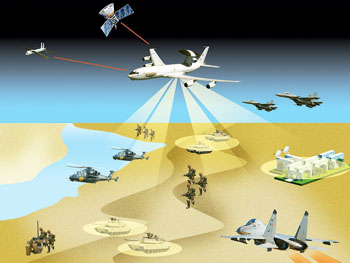INDIAN ARMED FORCES CHIEFS ON OUR RELENTLESS AND FOCUSED PUBLISHING EFFORTS

The insightful articles, inspiring narrations and analytical perspectives presented by the Editorial Team, establish an alluring connect with the reader. My compliments and best wishes to SP Guide Publications.

"Over the past 60 years, the growth of SP Guide Publications has mirrored the rising stature of Indian Navy. Its well-researched and informative magazines on Defence and Aerospace sector have served to shape an educated opinion of our military personnel, policy makers and the public alike. I wish SP's Publication team continued success, fair winds and following seas in all future endeavour!"

Since, its inception in 1964, SP Guide Publications has consistently demonstrated commitment to high-quality journalism in the aerospace and defence sectors, earning a well-deserved reputation as Asia's largest media house in this domain. I wish SP Guide Publications continued success in its pursuit of excellence.
- Appointments Committee of Cabinet approves one-month extension in service of Chief of the Army Staff
- Admiral Dinesh K. Tripathi assumes Command of the Indian Navy as 26th Chief of the Naval Staff
- Prime Minister witnesses 'Bharat Shakti' – a Tri-Services Firing and Manoeuvre Exercise in Pokhran, Rajasthan
- Interim Defence Budget 2024-25 — An Analysis
- Union Defence budget 2024
- Prime Minister Modi Commemorates Indian Navy Day in a Grand Ceremony
Communication for the BMS

Government needs to examine allotment of a dedicated defence band from the spectrum to meet the bandwidth requirement of the Services and keeping in mind threats to national security
The battlefield management system (BMS) sought by the Army will perform a variety of operational situational awareness and decision support functions at a battalion and combat group level. The lowest level to which the system will be connected is individual soldier and individual combat platform and the highest level will be the Battalion and Regiment Commander integrating to the tactical command, control, communications and information (Tac C3I) system through the command information and decision support system (CIDSS), enabling a common operational picture, integrating all sources through integrated use of the geographic information system (GIS) and global positioning system (GPS), will be a highly mobile and with high data rate.
Communications should not interfere with the legacy communication equipment and should easily be retrofitted into combat platform. Communications should optimally utilise the bandwidth available for military communications involving voice, data, imageries and video streaming. It should be scalable to ensure its availability to all elements and range from being man-portable to being fitted in combat vehicles.
When pitted against the future requirements, the legacy communication devices are physically incompatible, follow different link protocols which have issues of addressing, reachability and quality of service (QoS). The legacy of existing combat net radios (CNRs) with fixed frequency (analog), are capable of limited communication and data rates besides the requirement of a modem for data transmission. They are not secure and have no data encryption facility. In effect the present family of radio sets do not meet the requirements of a net-centric warfare (NCW) capable force that would facilitate transmission of voice, video and data simultaneously.
For a BMS to be successful there is a need for a reliable, robust, resilient and efficient communication system that assures that the network is always functional. Net-centricity warrants a paradigm shift from voice-centric to data-centric systems and networks eventually enabling NCW capabilities. For BMS communications the Indian Army would be looking for long ranges, high bandwidth data transmission (live streaming), facilitating messaging including voice mail, quickly deployable, self-configuring and self-healing networks, easy to customise, rolling coverage and interoperability. The focus will have to be on change in network topology, non line of sight communications, spectrum management, network management systems, QoS (including latency, assured delivery, jitter), security of communications, networks and storage, robustness and authentication. Deployment of new technologies like software defined radios (SDRs) that can also communicate with CNRs to offset growth in demand for spectrum needs serious thought. Compression technologies for passage of information must be capitalised. Test bed for the BMS should be at full scale, down to the individual soldier. It is prudent to do this and then think of eliminating a particular piece of equipment than adopting the reverse approach.
There is a need to review the communication philosophy of the Army. While legacy radios have their limitations, the change management towards fielding of latest technology like SDRs and communication infrastructure will need to be fine-tuned. Applications will need to be standardised and adaptable to any communication system including commercial off the shelf (COTS) products. Bandwidth requirements for the BMS need to be viewed keeping in mind the incremental requirements that would be required progressively over the years.
A conservative approach by the Army at this stage, which is likely due to the limitations of legacy communication equipment, could limit exploitation of future technology. As an indicator, the US Army catered for one GB bandwidth for a combat team in year 2010 and plans incremental upgrades.
Government needs to examine allotment of a dedicated defence band from the spectrum to meet the bandwidth requirement of the Services and keeping in mind threats to national security. This will also adequately address the communication requirements of the BMS. Robust security algorithms must be speedily developed to ensure security of both stored data as well as transmitted information. The private sector must be fully integrated into development of the BMS. There is also urgent need to formulate a separate Defence Procurement Procedure (DPP) for operational information and communication systems.





